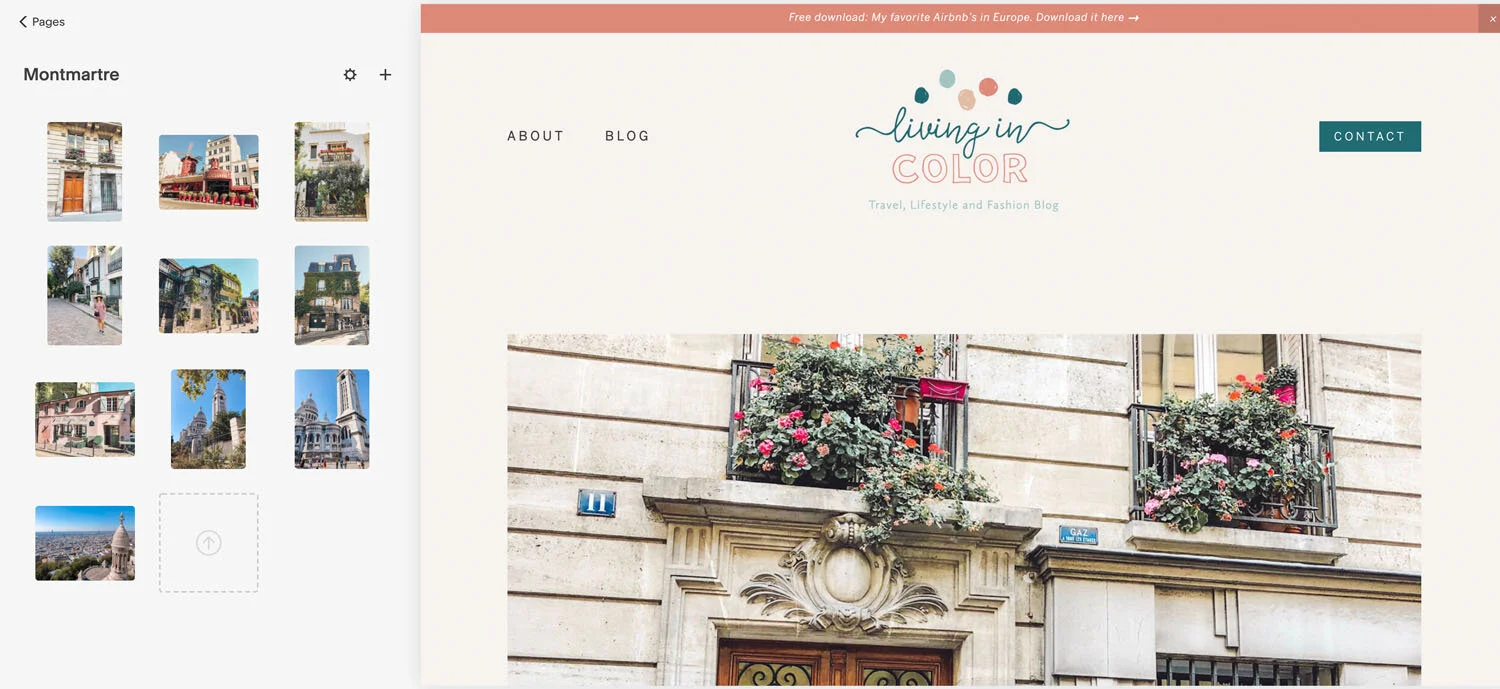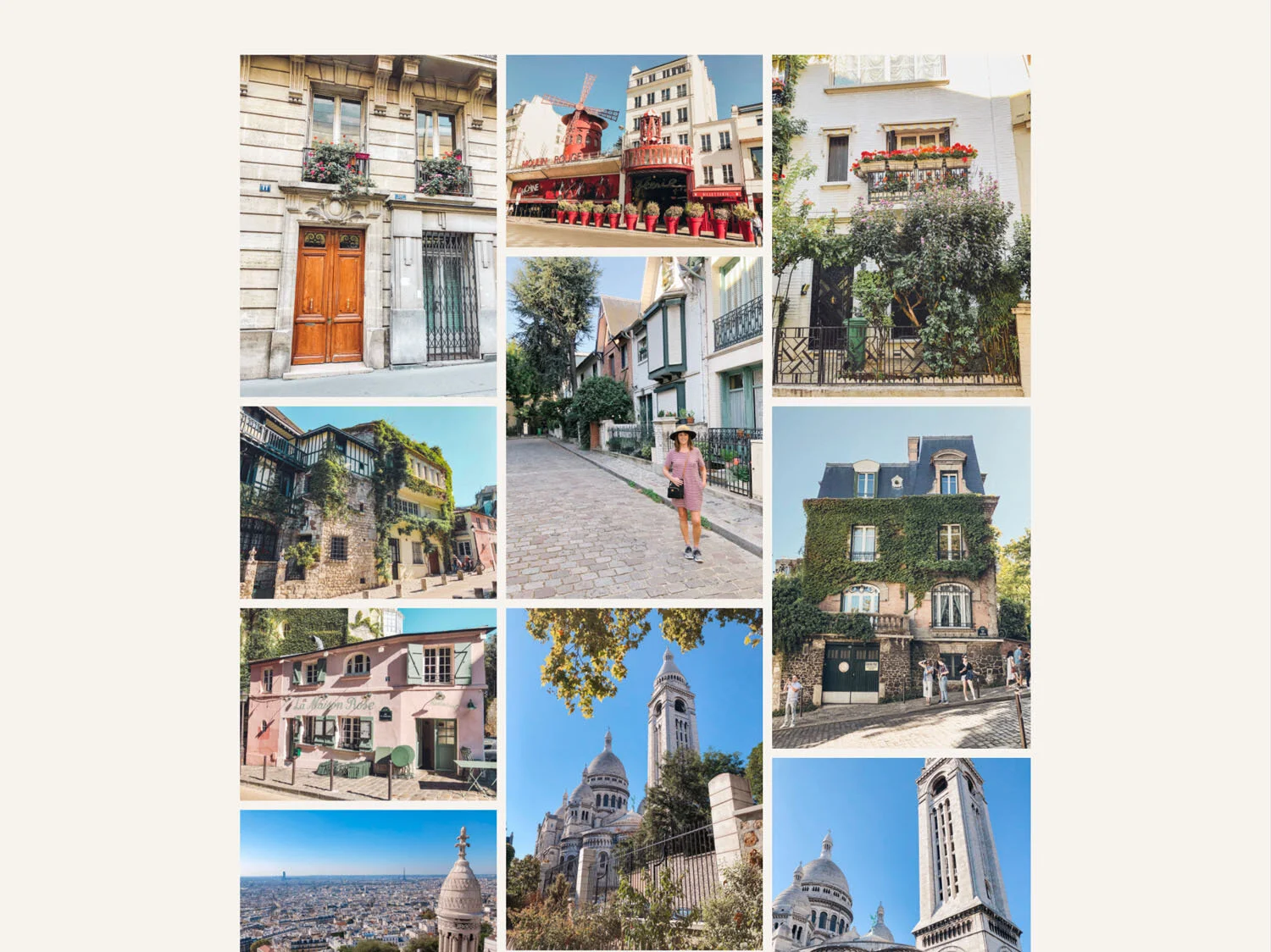How To Add Image On Squarespace Blog
6 ways to create pretty blog post layouts on Squarespace
A common question I get is "how can I structure my blog posts so it's not just all text upon text upon text?". Because - reality check … not too many people are going to actually read all that text. Especially when there is nothing to visually break it up.
People scan content so you need to design with that in mind
I mean which version would you rather read? :)


Best layout practices
Some common techniques for easier to read web pages that you might be familiar with that apply to any pages are:
Using proper heading structure.
Such as:
Heading 1
Heading 2
Heading 3
Heading 3
Heading 2
Heading 2
Keep fonts consistent and don't use too many
Using 2 - 3 fonts and varying the size, case, weight etc to vary them and make the headings stand out from the body text
Use images to break up the text
Keep your sentences and paragraphs short
Use bullet points and headings to break up the text and make it scannable
Keep your line length smaller than you think!
Make sure your blog post width allows for space on either side to create manageable line lengths for easier reading (Read this blog post for more information on this)
So those are the basic best practices for creating layouts that are easy to read and visually pleasing, but let's explore some other strategies we can use to create interesting blog post layouts using the tools we have on Squarespace.
1/ Use spacer blocks - your new best friend
- available on Squarespace 7.0 and 7.1
Spacer blocks can be your best friend in creating layouts. Inserting spacer bars in the midst of text will allow us to break up the space with some white space or breathing room, but even better, we can create columns to give us a ton more options.
We could display text in columns side by side, but I would encourage you instead to have a column of text with either an image or graphic in the next column to add some visual interest.
Adding in spacer blocks also helps greatly with the next strategy of creating interesting image layouts. Sometimes we only need them to set up a layout and then we can delete them once everything is in position.
2/ Be creative with image layouts (7.0 and 7.1)
- available on Squarespace 7.0 and 7.1
Breaking up your text with images is one of the best and most common ways to make your blog posts more visually appealing. This is especially true when you have a portfolio type website such as photographers and interior designers.
To insert an image in your blog, click on the insertion point where you want the image. Select "image" (on the top row) and then click the arrow to upload a photo
Please don't overdo this though! Less is more. You will want to keep your blog posts limited to 30 images or less. Make sure you follow proper image optimization strategies as well so it does not slow down the load speed of your blog post.
Let's explore some creative ways we can display images in a blog post:
Example 1 - group images together
To create a grouping of images in a pretty way, you can use columns (using our friend the spacer block!). Placing them in columns means they take up less space in our blog post and we can create better impact with a group of photos.
We are creating this layout in these videos:
Example 2 - text flowing around image
To create a unique effect, you can drag an image beside a block of text until you see a square outline and then let go of the image. This will wrap text around an image block. You can do this with any type of image layout block in Squarespace.

Example 3 - use gallery blocks
There are 4 types of gallery blocks you can use on any page in Squarespace including your blog. You can either upload your images within the block or else you can select an existing gallery.
To use an existing gallery, click the "+" beside the not linked section and select "gallery" for the page type. Name the gallery something descriptive and then upload your images there.
Example 4 - use a summary block
- available on Squarespace 7.0 only as 7.1 does not support gallery pages
There are 4 different summary block options: wall (masonry gallery). carousel, list and grid. The advantage of using the summary block is that you have more options to show text. You can have a title AND a description showing. You can also filter by categories or tags and show categories and tags.
To use a summary gallery you need to have a gallery page on your site with you images uploaded already. To do this:
Go to the not linked section and click "+" to add a new page. Select "gallery" for the page type Give your gallery a descriptive name.

Upload your photos either by clicking on "+" to load one at a time or by dragging in images from finder, bridge etc on your computer. You can rearrange the images, add titles,

Click on the insertion point whereever you want to insert a summary block. Here we are adding a wall or masonry type gallery to the blog post:
Select "wall" under Summary.
on the content panel select the name of the gallery you want.
On the layout panel adjust the column width and the padding between the images.
On the Display panel turn off image title if you don't want them as well as descriptions. Turn off the date in the primary metadata area.
You can choose to restrict the images that show by category on this page if you wish.

Here is the final wall summary block:

3/ Make use of the built in image layout blocks
- available on 7.0 and 7.1
Squarespace has some pretty nice image layouts that include text with images and even have button options. These layouts can be styled in the style editor to include your brand colors as well.
Placing these image layouts in your blog post will create a nice focal point and allow us to add some color into the midst of the text.
BONUS TIP: If you want your images to the full width of your blog post and you are using one of the Brine family templates, insert this code in the Design -> Custom CSS area:
.collection-type-blog article .sqs-layout .sqs-col-12 .image-block {
max-width: 100%;
box-sizing: border-box;
margin-right: auto;
margin-left: auto;
}
4/ Use the line block
- 7.0 and 7.1
We have easy access to a horizontal rule in Squarespace and we can change the color of it to match our brand colors. The line block is a great way to break up text visually or even highlight a block of text like a "call out" area of text.
5/ Make use of the quote block options
- 7.0 and 7.1
There are 2 different quote block options in Squarespace.
The first option is found as a content block when you go click on the insertion point. Near the top you will see "Quote block". This is the standard block that is used to create a focal point of text. You can style the quote text font and size as well as the "source name" for the font in the Site Styles panel. You can create stand out text with this!
The other quote option is accessed from the text tool editor. With your cursor on a line or paragraph of text, select the " from the text tool bar. The built in option for this adds a border on the left hand side of the text, but with some simple code you can easily add a bit of interest to this block.
BONUS TIP: To add some padding and a background color to the quote option from the text bar, add the following code to the DESIGN -> CUSTOM CSS area and adjust with your own colors. You can add a solid color using the hex value (ie #333333) or if you want to add some transparency, google the RGB value for the color and enter the 3 values in the the first 3 parameters of the rgba( ) section. The last value determine how transparent the color is as a percentage - so .5 would be 50%.
// blockquote from text editor - add padding and background color - remove left border
.sqs-block-html blockquote, .sqs-block-markdown blockquote {
padding: 2em 4em !important;
background-color:rgba(163,198,194,.5);
border-left:0px !important;
margin: 2em;
}If you want the same color to be applied to the quote block as well as the text editor then replace ".sqs-block-html blockquote, .sqs-block-markdown blockquote" with just "blockquote"
6/ Use graphics
Last but not least! This is my favorite way to add personality and visual interest to a blog post. We can insert graphics in the post instead of images in much the same way.
Just like the example we looked at above for the image with the text flowing around it, we can also do this with a graphic.
Instead of using the line block to divide text, we could add a custom graphic.
BONUS TIP : a super easy way to access graphics or images you want to use on multiple pages
To easily reuse graphics or images, create a gallery page in the not linked section and upload your image and name it something that identifies it.
In your blog post (or any web page) wherever you want to insert it:
• Click on the insert point and select carousel gallery (under the summary section)
• Choose "Use existing gallery"
• Locate the image you want to use and select itThe absolute best thing about using the summary block is that you can resize it using the circle at the bottom to drag up or down to make the image smaller or bigger.
How To Add Image On Squarespace Blog
Source: https://www.jodineufelddesign.com/blog/6-ways-to-create-pretty-blog-post-layouts-on-squarespace
Posted by: fabriziotwoured.blogspot.com

0 Response to "How To Add Image On Squarespace Blog"
Post a Comment